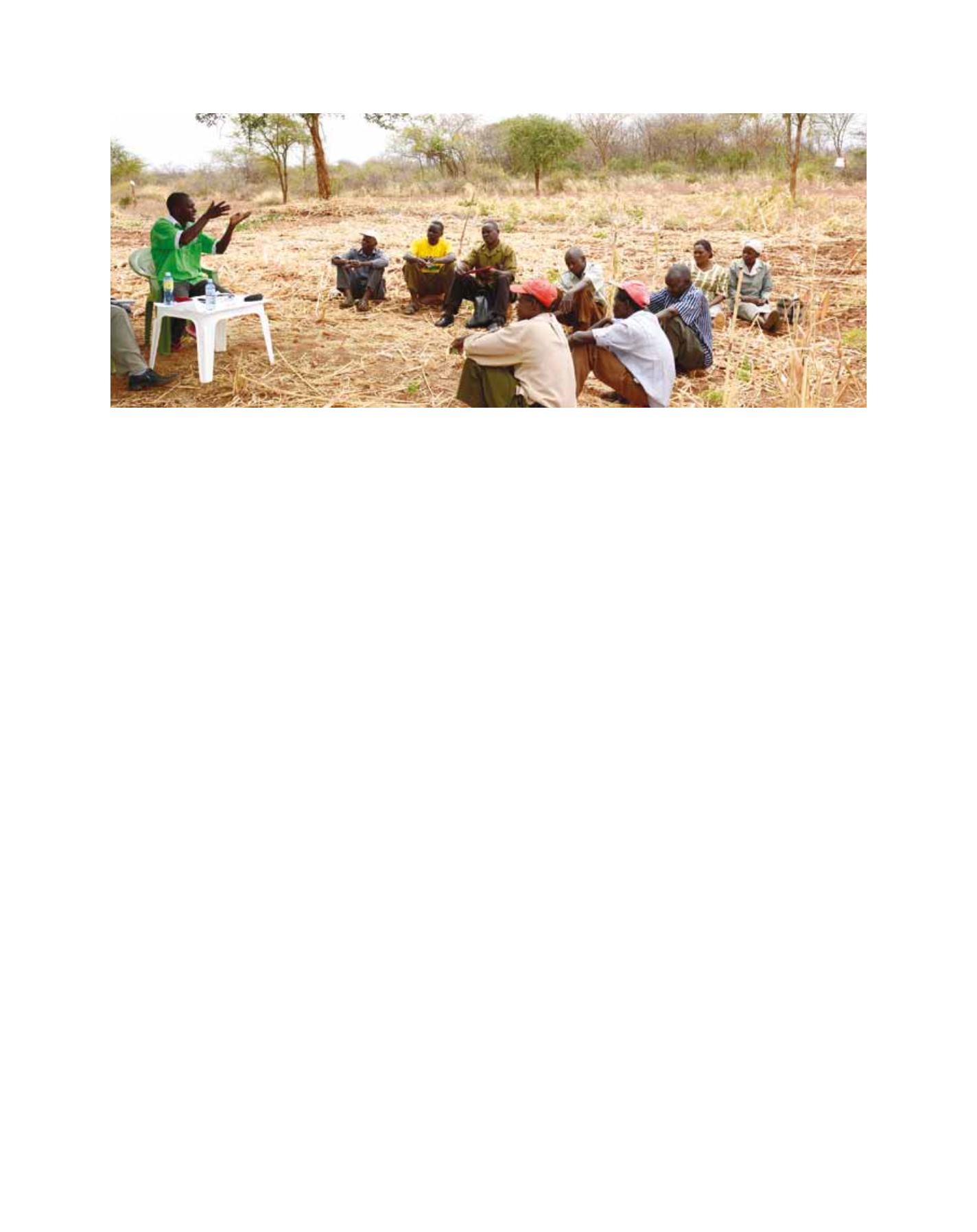

[
] 225
C
ommunities
that meteorologists and climate scientists need to maxi-
mize the relevance of forecast timings and ensure that
these are best able to support critical livelihood decision-
making processes. A number of the farmers participating
in the SALI project in Mbeere urged that the forecast for
the long rain season be issued by at latest mid-February
instead of early March, as this was too late for their main
pre-season decisions, while scientists are keen to ensure
that the forecast is informed by key climate factors influ-
encing the atmosphere, the timing of whichmay at present
prevent the meeting of farmers’ preferences. Developing
user-driver climate services requires the identification of
mechanisms which enable these communities to inform
both the process through which information is provided
and the focus of current and future climate research,
wherever relevant. In support of existing governmental
extension services, the humanitarian, DRR and develop-
ment communities can play a key role here. Working
through existing networks and partnerships, these organ-
izations provide conduits through which weather and
climate information can be disseminated and feedback
can be received about community concerns.
Stakeholder involvement
In Kenya, the exchange has supported a forum bringing
together the Kenya Meteorological Department (KMD)
with service providers and extension workers from the
Government departments of livestock, agriculture, agri-
cultural research and cooperation, as well as marketing
expertise from the Traidcraft fair-trade organization, to
provide the integrated climate information relevant to
participating farmers’ groups in the drought-prone Mbeere
district. The exchange approach offers opportunities to
try out more relevant forms of communication and, for
example, initiated the provision of SMS forecast updates in
Kiswahili direct to participating farmers group in Mbeere.
In the future, there is scope to further develop the range of
sectoral and scientific expertise engaged to support other
types and levels of decision-making processes.
To develop relevant climate services, weather and climate infor-
mation needs to be:
• Contextualized within the multi-hazard environments in which
vulnerable communities live
• Integrated within all relevant sectors, including agriculture, health,
livestock, water and sanitation, infrastructure (including housing),
transport and marketing
• Considered within an integrated risk management approach, which
allows for consideration of combinations of risks and hazards
within communities, countries and regions as well as globally.
While recognizing the importance of developing a framework for
systematic use and response to weather and climate information across
humanitarian, DRR and development planning, it is just as vital to
develop channels for community decision-making to be directly informed
by weather and climate information. While international and national
governmental and non-governmental organizations may have funding
and other constraints preventing them from acting on uncertain infor-
mation, communities may still be able to take a number of appropriate
actions themselves if given access to relevant, timely information.
Efforts to support greater and more appropriate application
of forecasts also highlight the importance of strengthening the
scientific literacy of community and humanitarian users, as well
as extension services, about the levels of confidence and uncer-
tainties within the weather and climate information available at
different timeframes and across different regions. Efforts to build
understanding about the probabilistic nature of climate informa-
tion and the levels of reliability will build a body of ‘demanding
customers’ more confident and better able to ask ‘the right kind
of questions’. Better use of climate information also requires that
users receive the information in probabilistic rather than deter-
ministic formats. Exchange activities have found that those living
in multi-risk environments are used to taking decisions in situa-
tions of uncertainty. Participating farmers groups in Mbeere, for
example, eagerly took to probabilistic information once it had been
explained in straightforward terms with practical examples.
It is equally important to develop two-way channels for the develop-
ment of weather and climate information which is best able to support
the priority concerns of at-risk communities. It is, for example, clear
Farmers in Mbeere District, Kenya discuss the seasonal forecast results
Image: R. Ewbank, 2012
















